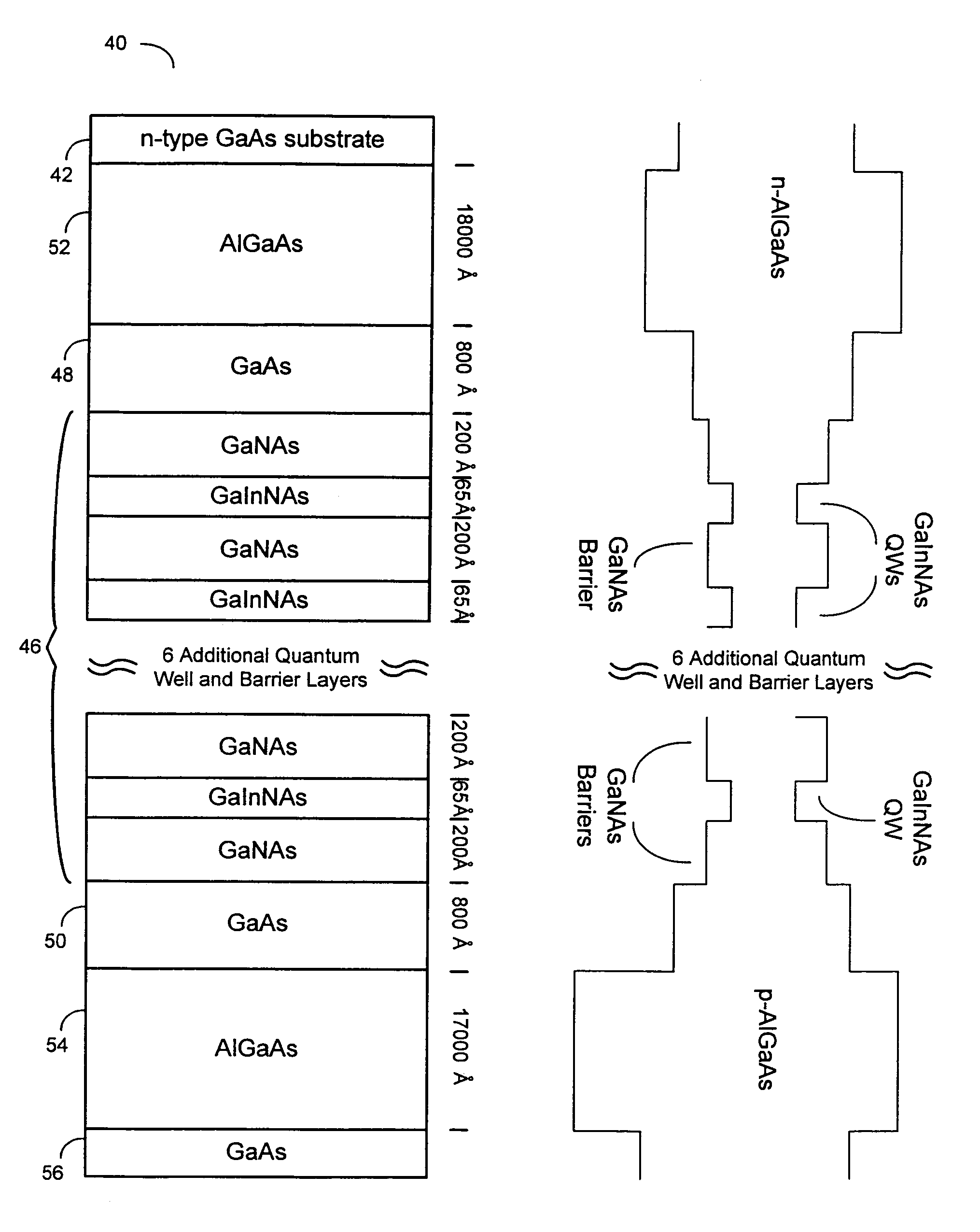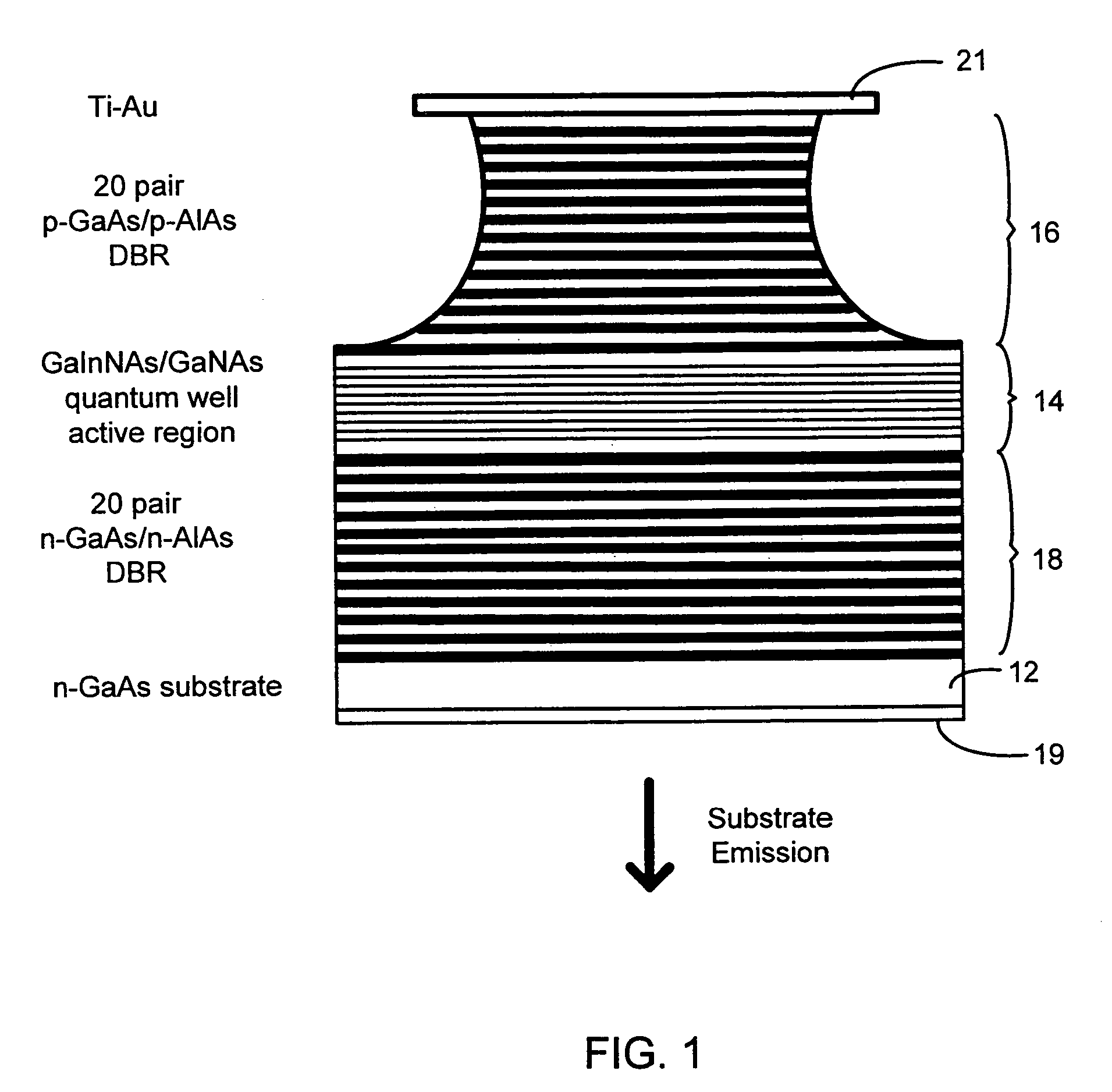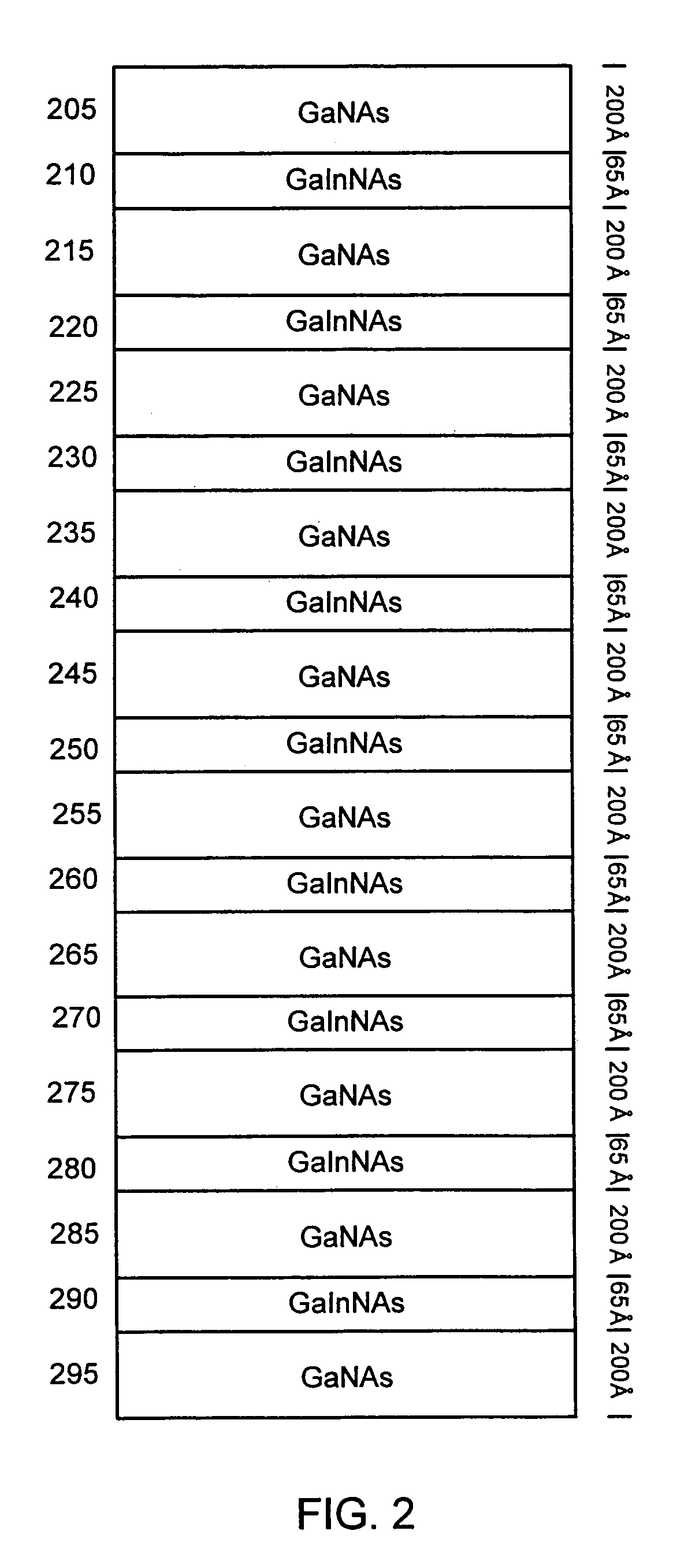Multiple GaInNAs quantum wells for high power applications
a quantum well and quantum well technology, applied in the field of optical semiconductor devices, can solve the problems of limiting performance, short wavelength of conventional gaas devices (850 nm) and limiting optical power, and achieve the effect of improving power outpu
- Summary
- Abstract
- Description
- Claims
- Application Information
AI Technical Summary
Benefits of technology
Problems solved by technology
Method used
Image
Examples
Embodiment Construction
[0030]The present invention is directed to a method and an optical device for achieving higher optical power output with emission at longer wavelengths. According to one aspect of the present invention, it has been discovered that tensile-strained GaNAs-based barrier layers may be used to compensate for compressively strained GaInNAs-based quantum well layers. A strained layer lattice can be grown by alternating layers that are under appropriate compression and tension. By offsetting the compressive strain generated by multiple quantum wells with tensile-strained barrier layers, a greater number of quantum wells may be formed. In this regard, an active region with multiple quantum wells increases the total thickness of the active area beyond the inherent critical thickness of the GaInNAs material.
[0031]The present invention is believed to be applicable to a wide variety of circuit arrangements including optical semiconductor devices and, more specifically, to such circuit arrangemen...
PUM
 Login to View More
Login to View More Abstract
Description
Claims
Application Information
 Login to View More
Login to View More - R&D
- Intellectual Property
- Life Sciences
- Materials
- Tech Scout
- Unparalleled Data Quality
- Higher Quality Content
- 60% Fewer Hallucinations
Browse by: Latest US Patents, China's latest patents, Technical Efficacy Thesaurus, Application Domain, Technology Topic, Popular Technical Reports.
© 2025 PatSnap. All rights reserved.Legal|Privacy policy|Modern Slavery Act Transparency Statement|Sitemap|About US| Contact US: help@patsnap.com



